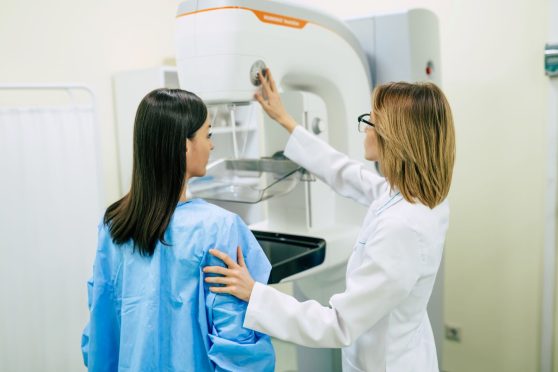When you’re facing a mastectomy or considering breast reconstruction, it’s natural to have a lot of emotions and questions about what’s right for you.
We asked Whitney Young, MD, breast surgical oncologist with Hartford HealthCare Medical Group and Midstate Medical Center, to guide us through the key facts about mastectomies and breast reconstruction.
Here’s what you need to know.
1. There are different reasons to have a mastectomy.
Women often choose a mastectomy when there is a breast cancer that is too large to successfully remove with breast-conserving surgery (lumpectomy) or when there is more than one cancer in the same breast.
“Some women are candidates for either mastectomy or breast-conserving surgery,” explains Dr. Young. “However, if they choose a mastectomy, they may be able to avoid radiation treatments after surgery.”
Some women with a hereditary predisposition to breast cancer, based on genetic testing, may also choose to undergo mastectomies to reduce their future risk of breast cancer, even before it develops.
“Alternatively, these women could undergo high-risk screening with additional (supplemental) imaging each year,” says Dr. Young. “This includes MRI of the breasts or contrast-enhanced mammography. Both methods allow doctors to detect breast cancer at its earliest stage, allowing for the least invasive surgery and/or treatment necessary.”
2. Mastectomies can be with or without reconstruction.
Many people think breast reconstruction is not an option for all women.
“On the contrary, the vast majority of women are candidates for reconstruction, regardless of whether radiation is recommended or not,” says Dr. Young.
Reconstruction reshapes the breast contour using either an implant or the patient’s tissue. When women choose reconstruction, the skin or both the skin and nipple can often be preserved. If the nipple can’t be saved due to technical reasons, cancer involvement or patient preference, there are other options, including nipple grafting, reconstruction, 3D tattooing or prostheses.
“Mastectomies can also be performed without reconstruction,” adds Dr. Young. “Many women find this empowering when overcoming a cancer diagnosis or strong family history of breast cancer. While there are available mastectomy bras and prostheses, some women also find confidence in a flat chest contour.”
> Related: What You Need to Know About the New Breast Cancer Vaccine
3. Breast reconstruction has come a long way.
Whether a woman chooses implants or her own tissue, doctors can now successfully offer reconstruction, even for those requiring radiation.
Implants have improved significantly and are available in a wide range of sizes and shapes, or women may opt for a DIEP flap (deep inferior epigastric perforator flap).
“This is where specially trained plastic surgeons can utilize the lower abdominal fat to serve as the tissue for the reconstructed breast in a complex procedure,” explains Dr. Young.
4. Mastectomies with reconstruction can happen when the time is right for you.
Mastectomies can be performed with reconstruction either during the initial surgery or later.
“When reconstruction is performed at the time of the initial mastectomy operation, regardless of whether the skin or skin and nipple are preserved, the sensation is often decreased,” says Dr. Young. “This means that even after healing and final reconstruction, a woman’s reconstructed breast is often numb even if her skin or skin and nipple were saved.”
Some women opt for breast reconstruction in a delayed setting.
“This can happen separately from the mastectomy, even years down the line,” says Dr. Young. “It’s important to note that breast reconstruction often starts at the time of a cancer operation but often requires more than one surgery to get the desired cosmetic outcome.”
5. You may need additional treatment after a mastectomy.
The care team may recommend follow-up care after a total mastectomy.
These treatments may include:
- Chemotherapy.
- Radiation.
- Endocrine therapy, a type of estrogen-blocking pill, can lower the risk of cancer recurrence over time.
“Although women may no longer need annual mammograms after a mastectomy, they are not home-free,” adds Dr. Young. “We recommend an annual clinical exam of the chest wall if a woman does not undergo reconstruction or in the reconstructed breast. Some women may also require imaging, depending on their risk of recurrence.”
6. Don’t forget about the support you need.
Undergoing a major surgery can be overwhelming, bringing anxiety and discomfort.
“In a mastectomy, there is also the adjustment to losing a breast, which can hold significant value to a woman’s identity and sense of self,” says Dr. Young. “Support groups and other women’s experiences can often be a source of reassurance.”
The healthcare team is also there to support the patient. In this shared decision-making process, the patient and the team can develop a surgical plan that aligns with her needs, values and goals in the short and long term.
“I think taking care of patients with cancer is the ultimate privilege,” adds Dr. Young. “It is a very difficult time in a patient’s life, and having the ability to impact them when they’re most vulnerable and take excellent care of them is an honor.”



